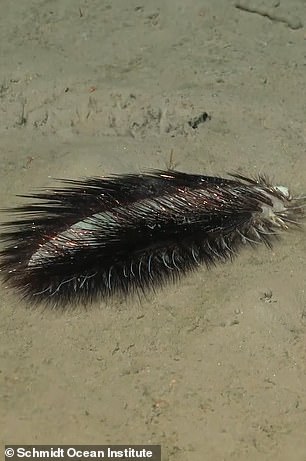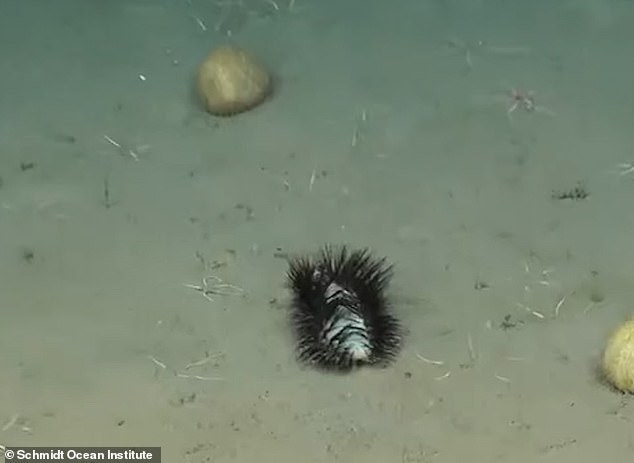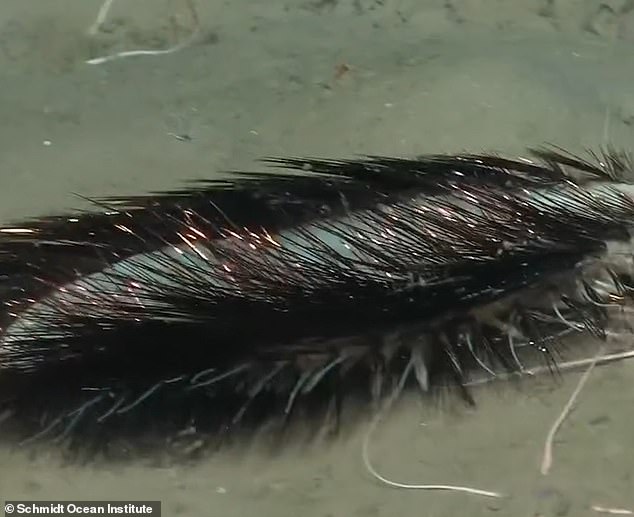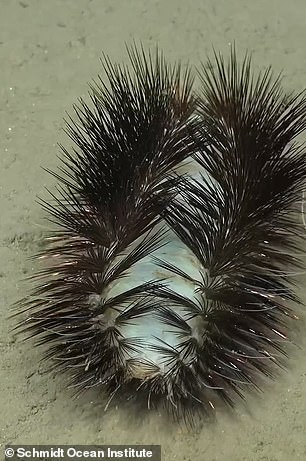At first glance, you could mistake this creature for a pair of shiny false eyelashes.
But the creature is very real and was discovered at the junction of three tectonic plates in the Pacific Ocean.
Researchers at the Schmidt Ocean Institute spotted the animal while using an underwater robot to explore the seafloor.
The animal is a polychaete, a class of marine worms, better known as bristle worms.
“To describe this polychaete it is enough to use jazz hands: it is the only way to capture the dazzle of this deep-sea worm!” experts said in an Instagram post about the polychaete.
Images of the creature have sparked huge interest on Instagram, with thousands of viewers flocking to the comments to discuss it.
One viewer described it as a “forbidden toilet bowl cleaner,” while another called it a “deep-sea Christmas tree.”
And one joked: “It looks like it’s two eyelashes put together.”

At first glance, you’d be forgiven for mistaking this creature for a pair of shiny false eyelashes. But the creature is very real and was discovered at the junction of three tectonic plates in the Pacific Ocean.

One viewer described it as a “forbidden toilet bowl cleaner,” while another called it a “deep-sea Christmas tree.”
The polychaete was sighted while the pilots of an ROV (remotely operated vehicle) were exploring the Chilean Margin.
“The international scientific team is exploring along the margin, a deep-water formation near the coast where a submerged continental shelf extends from the country’s western coast and drops sharply and suddenly into the Pacific Ocean,” explained the Schmidt Ocean Institute on Instagram.
‘It runs through all of South America due to the subduction of the Pacific plate under the South American plate.
“The confluence of tectonic forces and terrestrial influences makes this margin a natural laboratory for investigating deep-sea and chemosynthetic environments that host animals like this brilliant deep-sea worm (jazz’s handtail).”
In a video posted on the Schmidt Ocean Institute’s Instagram account, you can see the animal slowly moving along the seabed, its iridescent bristles glistening in the light.
Polychaete means “many bristles,” the experts explained.
“Each body segment has a pair of fleshy protuberances called parapodia covered in bristles called chaetae,” they wrote.
‘Some worms are bioluminescent, but this bold sparkler has protein structures in the bristles that make them iridescent.

In a video posted on the Schmidt Ocean Institute’s Instagram account, you can see the animal slowly moving along the seabed, its iridescent bristles glistening in the light.
“Polychaetes play a vital role throughout our global ocean, from heat-tolerant Extremophiles at hydrothermal vents to bone-eating, nutrient-cycling Osedax worms.”
Several viewers took to the comments to talk about the creature.
“I don’t know, but that’s an alien,” one user wrote.
Another added: “That’s a scrub brush for the sink.”
And one joked: ‘Who is that Pokémon?’
Chile’s Margin has been dcalled “natural laboratory”, and It has an intermediate water depth of approximately 2,652 to 3,281 feet.
During a 55-day expedition, which will end on December 5, the researchers set out to map, sample and characterize deep-sea exosystems along the south-central margin of Chile.
“Their research will improve our understanding of an essential area of the ocean while strengthening efforts to manage and protect Chile’s waters,” explains the Schmidt Ocean Institute on its website.


